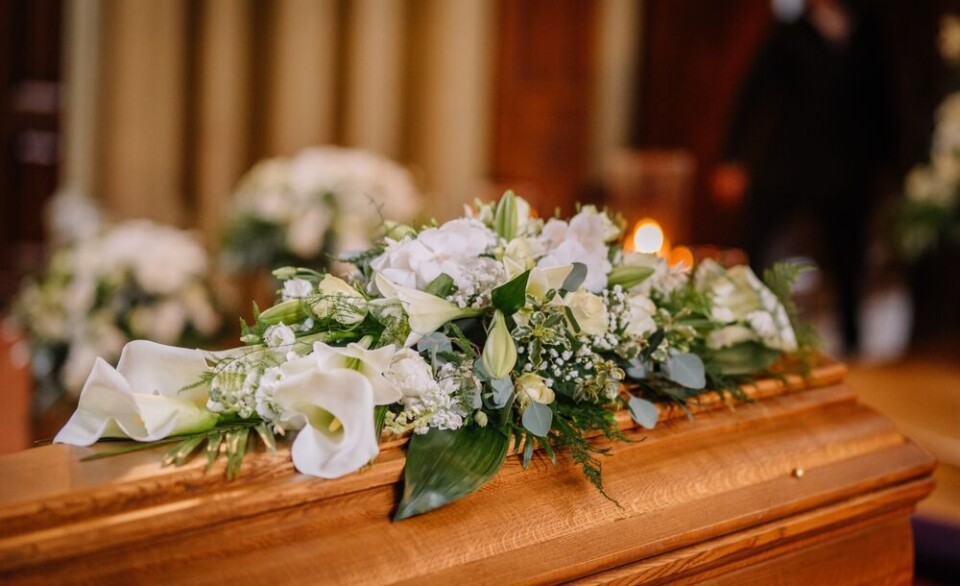-
Duck Cold! Four French phrases to use when it is freezing outside
We remind you of French expressions to use to describe the drop in temperature
-
When and why do we say le moral dans les chaussettes?
We explore this useful expression that describes low spirits
-
David Hockney among France’s New Year honours list
Former Normandy resident awarded second grade of honour
Last supper: giving classic art a feminist twist
Meet the French photographer who puts women front and centre when recreates classic works of art with a difference

What if key moments in history and art had involved more women? That is the inspiration behind photographer Philippe Lucchese’s latest project.
He is recreating tableaux of a series of masterpieces with women in key roles, then photographing them. The results are by turns challenging, witty and provocative.
He says his overarching theme is women; his first project was a series recreating saucy sepia postcards of the 1890s, but his latest involves recreating classical paintings, with female models taking traditionally masculine roles. “It’s not the first time someone has done it,” he admitted. “But I have given it the twist of using women instead of men.
“I adore the history of art, and this is a way of paying tribute to these works but, as a feminist, why shouldn’t women be centre stage?”
In his version of Leonardo da Vinci’s The Last Supper, he has gone a step further, with Jesus represented by a black woman in bridal attire. “It’s not necessarily a political message and women, of course, are not a minority, but in this particular image, making Jesus black was a comment about black minorities,” Mr Lucchese said.
“In these photos, woman are everything, they are villains and heroines, I make a world where women are everything.
“Men and women are equal, neither one nor the other is better, not all women are good, not all women are bad. So in my tableaux, women play all the characters, good and bad, black and white.”
He said his photography can be sensual, perhaps even slightly erotic, but denies that it is exploitative.
“I like to deal with sensuality, and that’s not my invention. Sensuality in art is well-established, and it’s natural that I do see women as desirable, and I enjoy female sensuality.
“I’m currently working on Rodin’s sculpture, The Kiss using two women instead of a man and a woman. That will be quite sensual.”
Mr Lucchese started out as a film maker, but found that his favourite part of the job was setting up the scene, choosing camera angles and designing visual style. “I don’t make films any more, I just take photographs, which was my favourite part of shooting video.”
He stressed that women in his images are always tastefully posed, they are always professional models, working with him willingly, and they are never objectified. “This is the difference between art and pornographic magazines promoting crude objectified images of female flesh.”
He says this is an important point because it can be tricky to find the right balance and he wants to avoid being just another man taking pictures of naked women.
“I think I have achieved it. A nude doesn’t have to be vulgar; some dressed images can be much more shocking. The position, the angle both count in a photograph. “It’s a question of respect.”
A first exhibition of his art photos is planned for April, although he has not finished with the idea. “I want to continue this series with more images; as this exhibition travels, I’ll add to it.
“I want to do Rodin’s Kiss, and I’d also like to do Michelangelo’s The Creation of Adam (a fresco in the Sistine Chapel in Rome). I have lots of ideas, I’m also considering Michelangelo’s Pietà sculpture, in St Peter’s Basilica, in Vatican City.
It takes a lot of time to prepare a tableaux. The scenery has to be constructed, and then models and costumes have to be found.
“When we are shooting, I often have a crew of 10 people, including scene-dressers, artists, lighting technicians, costumiers, make-up and hair, etc. It takes all day. When we shot Théodore Géricault’s The Raft of the Medusa (above) we had 20 models, so there were about 30 people in the room. And the women posed for up to three hours in order to get the right shot. It took a very long time.”
Philippe Lucchese’s photographs can be seen at the Hôtel Goüin in Tours (37) from April 15 to May 15. For details, see philippelucchesephoto.com
























